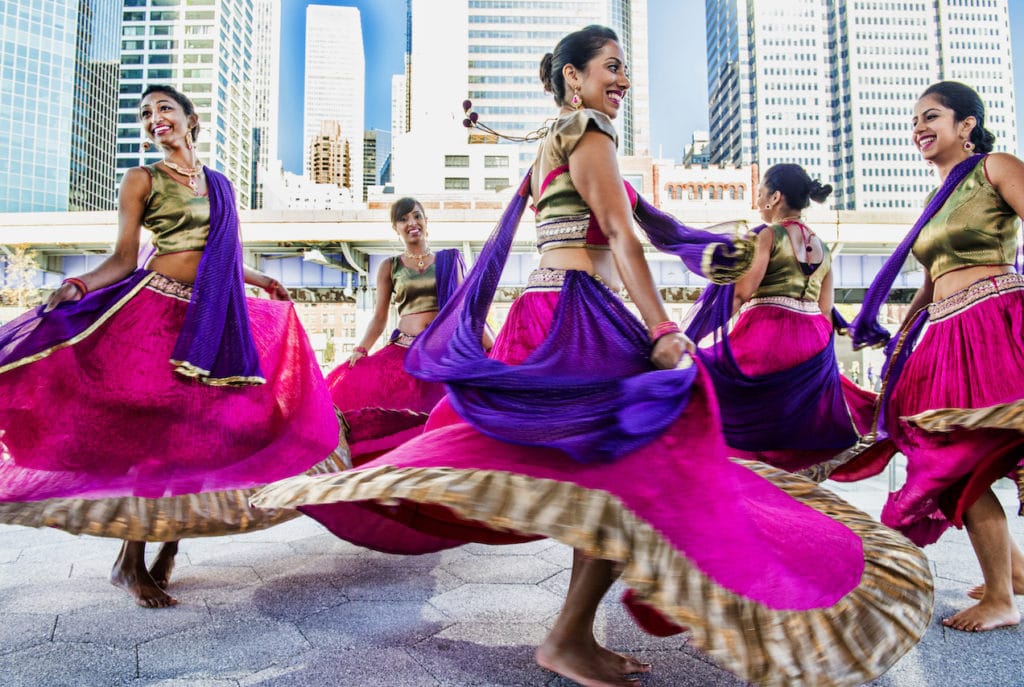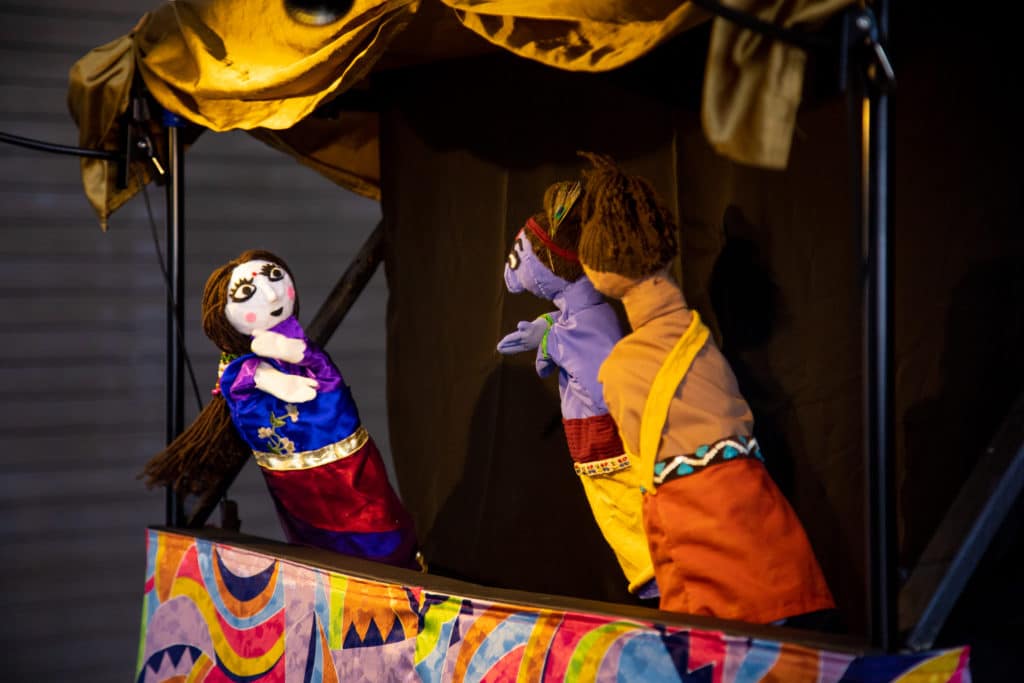
Celebrating Holi
Spring. At last. This year, we’re marking the start of the season with a celebration of Holi, the traditional festival of colors. Join us at The Corner for a lineup of family-friendly events on Saturday, March 19, presented by The Culture Tree, which runs educational and enrichment programs to promote South Asian culture. Kids will learn about the holiday via a puppet show and an interactive Indian dance workshop.
But what is Holi exactly? Here, we turn the mic over to Mona Sehgal, a children’s book author and communications director at The Culture Tree, to shed light on the tradition.

For those not familiar with the celebration of Holi, can you describe the origin and significance of the holiday?
Holi has been celebrated in the Indian subcontinent for centuries and has origin stories dating back to the 4th century CE. Holi marks the arrival of spring after a cold winter, and is symbolic of the triumph of good over evil. It is celebrated in March, corresponding to the Hindu calendar month of Phalguna. In 2022, Holi is on March 18. It is now celebrated around the world as a way to welcome spring, embrace inclusivity and get messy with color.
How is Holi typically celebrated?
The celebration begins on the eve of the festival, when people light bonfires to symbolically destroy evil spirits. The next day, the day of Holi, people play Holi with powdered colors (called gulaal), water squirters (called pichkaaris) and water balloons. People typically dress in white, a literal white canvas to show off the colors as they play Holi with friends and families. There are a lot of parties, music, dancing and delicious food. Some delicacies eaten during Holi are thandai, a milkshake made with nuts and spices, which is supposed to have a cooling and therapeutic effect; gujjiyan, a deep fried pastry which is filled with khoya, nuts and spices; dahi bhalle, spiced cool yogurt with fried dough balls and topped with chutneys.
What is the inspiration behind the puppet show Colors of Krishna’s Love?
There are several mythological and folk stories about the origin of Holi. Growing up in India, we saw these stories portrayed in dance performances, plays and puppet shows. Puppetry is one of the oldest forms of entertainment in India and is considered an art form that is meant to be enjoyed by all. The Culture Tree has developed four puppet shows that tell cultural stories from South Asia. The shows are interactive and include dance, iconic music, drama, puppetry, storytelling and songs.
The Holi puppet show is written by Indian storytellers Madhuri Kale and Sampada Pawar. Through Colors of Krishna’s Love, we bring to life Krishna, one of the most prominent Hindu deities, and a popular story of Holi. Lord Krishna loves to have fun with his friends and family. This performance showcases Krishna playing Holi with his friends Radha and Sudama. Here children will learn the story of Holi and also learn how it is celebrated.

Why is it important to teach children about Holi, and about the issues presented in Colors of Krishna’s Love?
Through Colors of Krishna’s Love, we recreate a popular story of Holi while also addressing the colorism that existed during Krishna’s time and during our current time. We address this topic head-on, while also conveying the message that love and friendship prevail and can overcome socially-created barriers surrounding skin color.
We try to provide authentic and inspiring cultural experiences to children and their families. This cross-cultural exposure helps children grow into knowledgeable, open-minded and respectful individuals.
What else does The Culture Tree do to help connect children to South Asian cultural experiences?
The Culture Tree promotes cultural literacy about South Asia through language and educational and cultural programs. Our goal is to create empathy, respect and understanding towards all different cultures and further inclusivity, while still helping address questions about identity with heritage cultures. We partner with museums, galleries, schools and libraries to implement our classes and programming. Our programs include celebration of key festivals and events, puppet shows, bilingual storytime, mindful eating, mindfulness and language classes in key South Asian languages.
What have been some of The Culture Tree’s proudest achievements?
Our all-time favorite event was when we were invited by The Metropolitan Museum of Art (The Met) to be a part of their World Culture Festival, where we did three performances of The Colors of Krishna’s Love in their stunning Asian Art Gallery. It was absolutely magical to perform surrounded by paintings and sculptures in an art gallery. It was as if we were transported back to the India of Krishna’s time.
We are also very proud of conceptualizing Namaste Express at the Children’s Museum of Manhattan – this is an exhibit idea conceptualized as an interactive train journey through India. The exhibition layout allows children and families to make multiple stops at states and cities in India and sample the variety of architectural styles, cultures, and environments through colors, shapes, structures, and landscapes, to celebrate the beauty and diversity of India’s different cultures and languages along with its historical and technological advancements. Last year, the Mayor of New York declared June 20th The Culture Tree Day for NYC, an absolutely amazing honor.
To learn more about the the Holi event at The Corner in the Seaport on March 19 and reserve a spot, check out the event page. For more information on The Culture Tree’s work and programming, visit their website and Instagram.
